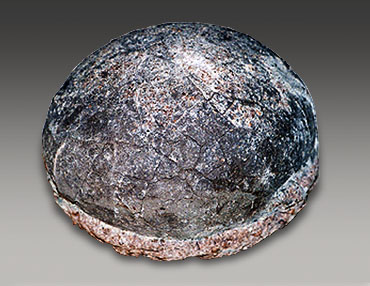
Hadrosaur Egg
Gaogou Formation, Henan Province, China
80 MYA.
Dinosaur eggs were first discovered in France in the mid-1800s. However, the paleontologist thought they were from large extinct birds. In 1923, an American expedition from New York’s Museum of Natural History explored Mongolia for signs of early man. They chanced upon prehistoric fossil eggs there, and verified that they came from dinosaurs. Since then, nests of dinosaur eggs have been discovered all over the world.
Dinosaur eggs come in two main shapes: round and elongated. Research has shown that round eggs are from plant-eating  dinosaurs and elongated eggs are from carnivorous dinosaurs like Tyrannosaurus Rex. These were laid in clutches of between three and 20 eggs. Most failed to hatch due to attacks on nests by predators.
dinosaurs and elongated eggs are from carnivorous dinosaurs like Tyrannosaurus Rex. These were laid in clutches of between three and 20 eggs. Most failed to hatch due to attacks on nests by predators.
By the beginning of the 1990s, surprisingly large formations of hadrosaur eggs were discovered in southern China. Hundreds were imported into the U.S. and sold at the Tucson Rock and Mineral Show and other locations. However, China has now declared “National Treasure” status on more recent archaeological finds and are no longer allowing them to be exported out of China.
This specimen acquired by the museum is an egg from a Hadrosaur or duck-billed dinosaur, a herbivorous species that roamed much of China between 141-65 million years ago. It was obtained from a private party in 2002. It was subsequently sold at auction.